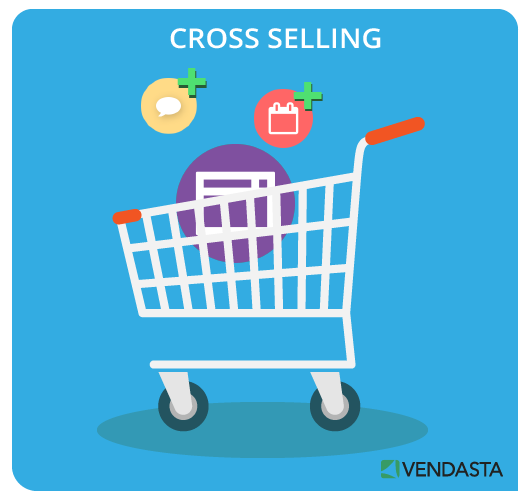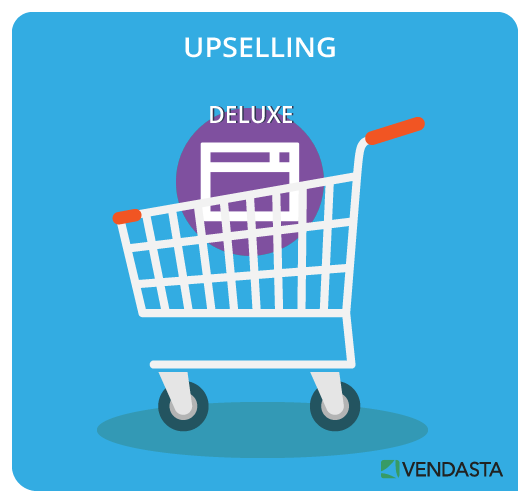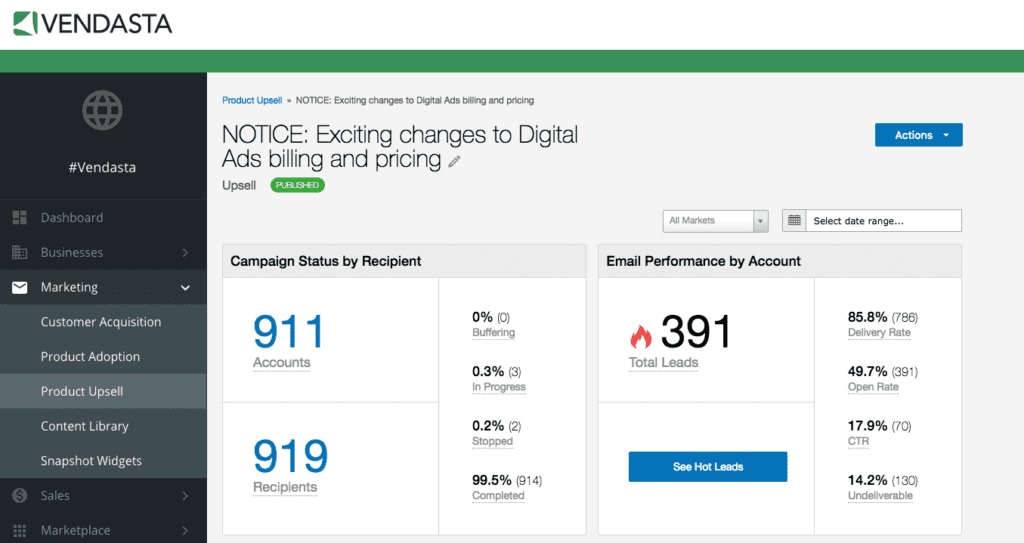How to Cross-Sell and Upsell Your Clients With Email Marketing
Have you ever walked into a car dealership looking for a sensible, used sedan only to be persuaded into test-driving a Ferrari? Or visited a Foot Locker to look at running shoes, but walked out with the shoes, plus new shorts, a neon top, wrist and headbands, a Fitbit and fanny-pack?
Sound familiar? Not only have you driven an amazing muscle car and set yourself up to run in ALL the upcoming 5K races, you’ve also experienced upselling and cross-selling (in that order) first-hand!
Let's dive into these sales tactics so you can use them to increase your revenue.
Table of Contents
Why use cross-selling and upselling techniques?
7 Tips for Successful Cross-Selling and Upselling With Email Marketing
4 Key Action Items to Get Started
Cross-selling and upselling are two closely-related classic strategies businesses use to get customers to buy a complementary or higher-end product.

Source: UberTheme
What is cross-selling?
Cross-selling is when you use a sales opportunity to sell additional product or services to an existing customer. For a marketing example, it's like when you sell one of your business clients a website as well as live chat and form building software to complement their website.

What is upselling?
Upselling is a technique where you use a sales opportunity to have an existing customer purchase a more expensive product/service, or an upgraded version of a product/service, to make a more profitable sale. For a marketing example, it's like when a customer comes to you for a 3-page website, but you sell them a 10-page responsive site with hosting.

Why use cross-selling and upselling techniques?
What makes these strategies so effective is that it’s much easier to sell to an existing customer than a new one!
In fact, the book Marketing Metrics says, “The probability of selling to a new prospect is 5%-20%. The probability of selling to an existing customer is 60-70%.”
Why is this true? Well, your existing customers know you. You’ve got trust and momentum on your side, so they’re going to be much more receptive to your ideas and advice than a prospective customer would.
[clickToTweet tweet="The probability of selling to an existing client is 60%, so use upsell and cross-selling campaigns! #emailmarketing" quote="The probability of selling to an existing client is 60%, so use upsell and cross-selling campaigns! #emailmarketing"]
Another major perk of that established relationship is that you already have their email address. This gives you the opportunity to communicate with them directly. One of the best ways to scale that communication to an ever-growing list of clients is to come up with an automated email marketing strategy to cross-sell and upsell them (in a non-salesy way).
Plus, this is a strategy that any business in any industry can use. So if you’re a digital marketer, you could create an email on how to cross-sell products, and literally cross-sell one of your other services through that email.
Let’s take a deeper look at how to do this through email marketing.
[adrotate banner="119"]
7 Tips for Successful Cross-Selling and Upselling With Email Marketing
1. Segment your list
To be able to effectively anticipate what your customers will need going forward, you’ve got to segment your list. This means doing your research and organizing customers into subgroups based on the services or products they currently use. Once you’ve done this you’ll be able to create customized, personalized content about the complimentary services and products you offer.
How will segmentation help? MailChimp found that when their users segmented email lists, open rates increased by almost 19%, and click-through rates by almost 22% compared to non-segmented sends.
2. Be helpful to your clients
Yes, you’re promoting your services in these emails, but subtlety is key! Don’t be the pushy car salesman—be the friend who can’t stop talking about the amazing book she just read! Share your expertise and offer tips that your customer will find valuable.
3. Use your voice
Your customers chose you and your company for a reason. Part of that decision was likely based on how you interacted with them. Continue that dialogue in your email marketing by using your unique voice. In real life, are you frank and straightforward? Lighthearted and playful? Somewhat cheeky and irreverent? Don’t be afraid to let your personality show.
4. Be strategic with your timing
The timing of your emails is crucial to the success of these campaigns, and understanding your client’s needs is a big factor in this. For example, if you can identify gaps in a client’s current services or complementary products that would benefit them, let them know! Don’t send out the same 8 emails at the same time for everyone—analyze each client’s services and goals and customize content based on what you discover.
Related Reading: The Best Time to Send B2B Marketing Emails
5. Create a clear call to action
I know I preached subtlety above, and I stand by that regarding the bulk of your content, but your call to action must be clear. Make sure your client knows that you can help them, and what the next step is.
Related Reading: The #1 Thing Missing From Email Marketing: Effective Call To Action
6. Utilize marketing automation software
In the digital age, there are a number of robust email marketing solutions with campaign automation. With smart software, you'll know what clients are interested in which products when, and you’ll be able to reach out with new campaigns accordingly. Experiment with transactional emails featuring additional products and services, leverage previous client purchase information as new sales opportunities, and more with marketing automation.
7. Track and analyze your results
Successful marketing is a continuous cycle of research, implementation, tracking, analysis, and adaptation. You’ve got to analyze your results to see what’s working and what isn’t. Not every email is going to resonate with your clients, and that’s OK. If an email just isn’t working, pull it out of the rotation and try a new approach.

Following these 7 tips will help you put together a campaign that offers awesome actionable content for your clients. While your goal, of course, is to cross-sell and upsell, you need to think of your client’s needs first and foremost.
4 Key Action Items to Get Started
Get started with cross-selling and upselling campaigns today with your email marketing by following these easy steps:
- Make a list of services or products to upsell or cross-sell to existing customers.
- Analyze your customers and segment them based on purchase history, demographics, how long they’ve been a customer, and/or other appropriate metrics.
- Come up with a list of topics to cover in your emails based on those products or services, and customize the sequence of these topics based on your segmentation.
- Get started writing your content based on those topics!
Cross-Selling and Upselling with Vendasta's Marketing Automation Platform
You can use the Vendasta platform's marketing automation system to strategically cross-sell and upsell your existing clients with additional digital marketing solutions. Also check out the recommended campaigns to see our pre-build email marketing campaigns for product adoption and upsell opportunities! Meanwhile, each sales reps will be able to track their upsell and cross-sell initiatives with Sales Pipeline.
Email marketing is full of possibilities, with new opportunities for acquisition, adoption, and growth of your business clients. Do you have a particular cross-selling or upselling technique that works for your industry? Let us know in the comments below!
If you haven’t tried us and would like to learn more, request a demo today.
[adrotate banner="96"]

